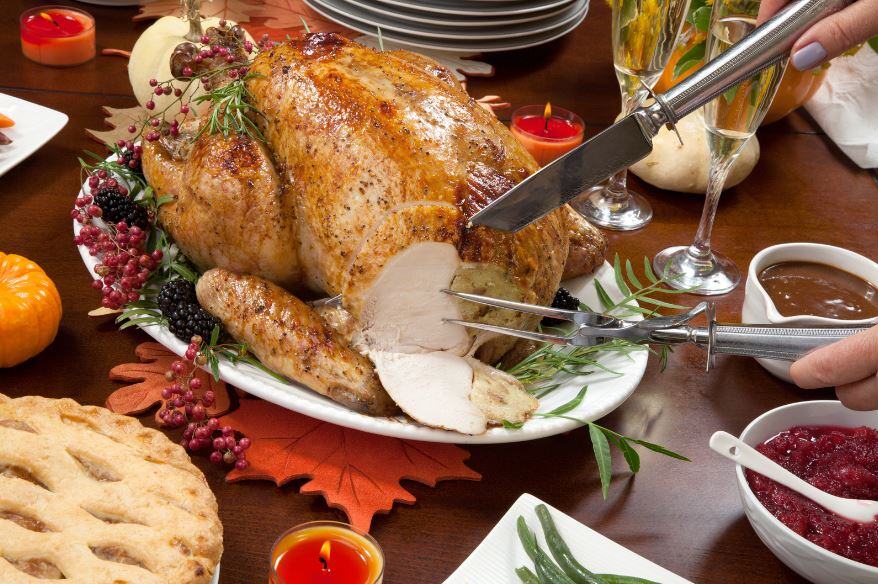.png)
What to Know About Celebrating Halloween in the U.S.
Every year on October 31st, people all over the United States celebrate Halloween. Children and adults dress in ...

Table of Contents
Thanksgiving is a beloved holiday in the United States - a time for families and friends to come together, express gratitude, and enjoy a large feast. While many associate Thanksgiving with turkey and pumpkin pie, the history is a journey through time and cultures, blending Native American traditions with European customs to create a unique American celebration.
The roots of Thanksgiving can be traced back to the early 17th century, when a group of English Pilgrims seeking religious freedom set sail on the Mayflower and landed in what is now Plymouth, Massachusetts, in 1620. The first winter was harsh for the settlers. However, with the help of the indigenous Wampanoag people, they learned how to cultivate crops, including maize (corn), and hunt for local game.
In 1621, the Pilgrims celebrated their successful harvest with a three-day feast, often considered the first Thanksgiving. The event was a sign of friendship and collaboration between the Pilgrims and the Wampanoag, emphasizing the importance of unity and cooperation.
Thanksgiving celebrations varied throughout the 17th and 18th centuries, with individual colonies and states holding their own observances. It was in the 19th century that Thanksgiving as we know it began to take shape. In 1863, President Abraham Lincoln proclaimed Thanksgiving a national holiday, setting the date as the final Thursday in November. This proclamation aimed to foster a sense of unity during a divided and tumultuous time in the nation's history.
In 1939, President Franklin D. Roosevelt (FDR) adjusted to the Thanksgiving holiday. With the Great Depression still affecting the economy, FDR moved Thanksgiving one week earlier to the third Thursday in November, hoping to extend the holiday shopping season. This decision faced resistance and was met with mixed reactions. In 1941, after two years of debate, FDR signed a bill making Thanksgiving the fourth Thursday in November, where it remains today.
Over time, Thanksgiving became a symbol of national unity and gratitude. Parades, football games, and the Presidential turkey pardon have all become integral to the modern Thanksgiving celebration.
Today, Thanksgiving is a time for family gatherings, giving thanks, and feasting on turkey. Americans eat more than 700 million pounds of turkey every Thanksgiving!
The traditional Thanksgiving meal typically includes roast turkey, stuffing, mashed potatoes, gravy, cranberry sauce, and various side dishes, followed by pumpkin pie and other desserts.
The Macy's Thanksgiving Day Parade in New York City is a beloved tradition, attracting millions of spectators, featuring giant helium balloons, marching bands, and celebrity performances.
In recent years, there has been a growing emphasis on incorporating diverse cultural elements into Thanksgiving celebrations. Many families include dishes from their cultural backgrounds to make the meal more reflective of the nation's rich tapestry of immigrant traditions.
Volunteering is a common Thanksgiving Day activity, and communities often hold food drives and host free dinners for those in need.
Another modern development was the rise of online shopping and the Black Friday sales the day after Thanksgiving. Many stores would open their doors on Thanksgiving evening, or incredibly early the day after, offering special deals and promotions to kick off the holiday shopping season. However, this has evolved to stores offering early Thanksgiving promotions, giving Black Friday pricing for several days or even weeks ahead of time.
From the early days of Pilgrims and Native Americans sharing a harvest feast to today's modern celebrations with parades, football, and pumpkin pie, Thanksgiving has evolved into a highly anticipated holiday. It's a time for turkey, giving thanks, and coming together with loved ones.
This blog post was written by Megan Tully, Marketing Manager.
.png)
Every year on October 31st, people all over the United States celebrate Halloween. Children and adults dress in ...

Celebrating Chinese New Year As the world eagerly welcomes the vibrant festivities of Chinese New Year, also known as ...

Mardi Gras is a vibrant and lively event celebrated worldwide for centuries. But the annual celebration is more than ...
Please fill out the form below for more information or to schedule a consultation.